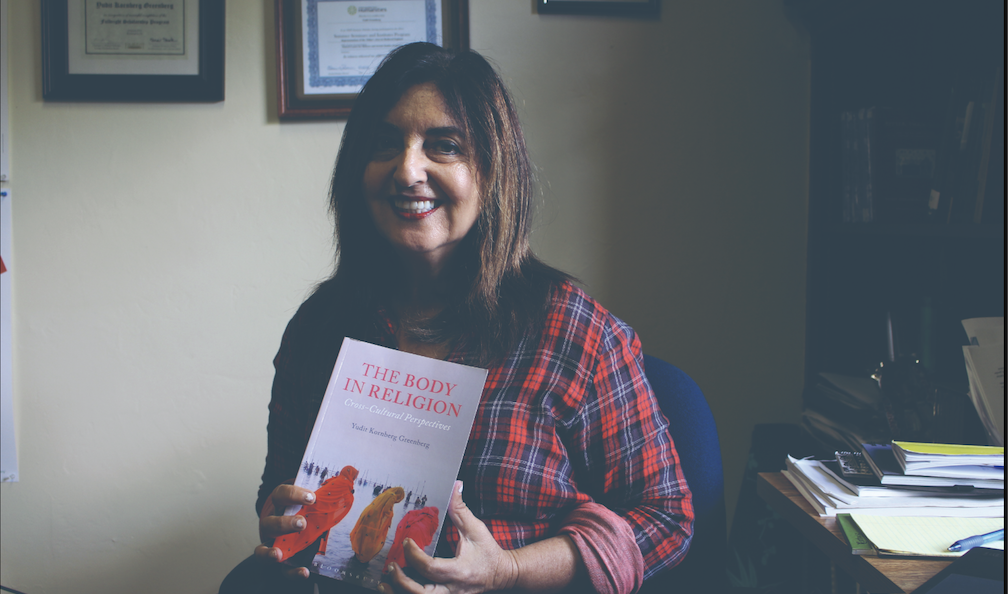Dr. Yudit Greenberg is proud to have published her own textbook, The Body in Religion: Cross-Cultural Perspectives. Previously, her class had no textbook, as there used to be no one work analyzing religions in reference to the human form.
At Rollins, Greenberg is a Professor of Religious Studies and the Founding Director of the Jewish Studies program.
Greenberg has been teaching a course on the body in religion at Rollins for nearly a decade, yet she never had access to a textbook. Instead, she used primary and secondary sources as texts to give her students. She was approached by Bloomsbury Publishers to write the textbook.
The book is intended to be used as a textbook for undergraduate classes studying sociology, anthropology, religion, feminism, gender, and sexuality. It addresses and problematizes the ways in which the human body is imagined and deployed in religions across the globe. There is an emphasis on how mind-body dualism and notions of gender and sexuality have been shaped by religion and culture.
The book examines the body in religious myths, disciplines concerning sexual conduct and dietary laws, celebrations of the body from birth to death, and spiritual technologies such as fasting, prayer, yoga, and meditation. It also covers body modifications such as tattoos.
Greenberg cites a wide range of religions in her book. Along with the five major religions of the world, she included Jainism, Confucianism, Daoism (also known as Taoism), Shintoism, Paganism, Aboriginal, African, and Native American religions.
“I thought it would be a valuable contribution to the academic study of religion, gender, and sexuality,” she said.
This was Greenberg’s first experience writing a textbook. “Any topic examined cross culturally is challenging, and I learned to keep a balance of breadth and depth.” She said, “not being able to include references to my sources was initially very strange, but I gradually got used to it.”
Greenberg also struggled initially with how to structure her textbook. Eventually, she decided to use four major categories to sort her topics, which made her feel more comfortable. She also found help in sharing drafts with her students and friends.
By writing this book, Greenberg wanted to make the academic study of religion accessible to a wide audience, and to debunk misconceptions of religion’s primary concern with metaphysics—to demonstrate how important the body is in religious beliefs and practices, and to expose patriarchal structures and values as fundamental in shaping views of gender and sexuality.
“The cross cultural study of the body in religion provides context for exploring existential issues related to religious and gender identity, health, healing, birth, and death,” said Greenberg on the importance of what her textbook teaches.
Greenberg invited students to take the textbook’s corresponding class, The Body in Religion, in future semesters.







Be First to Comment